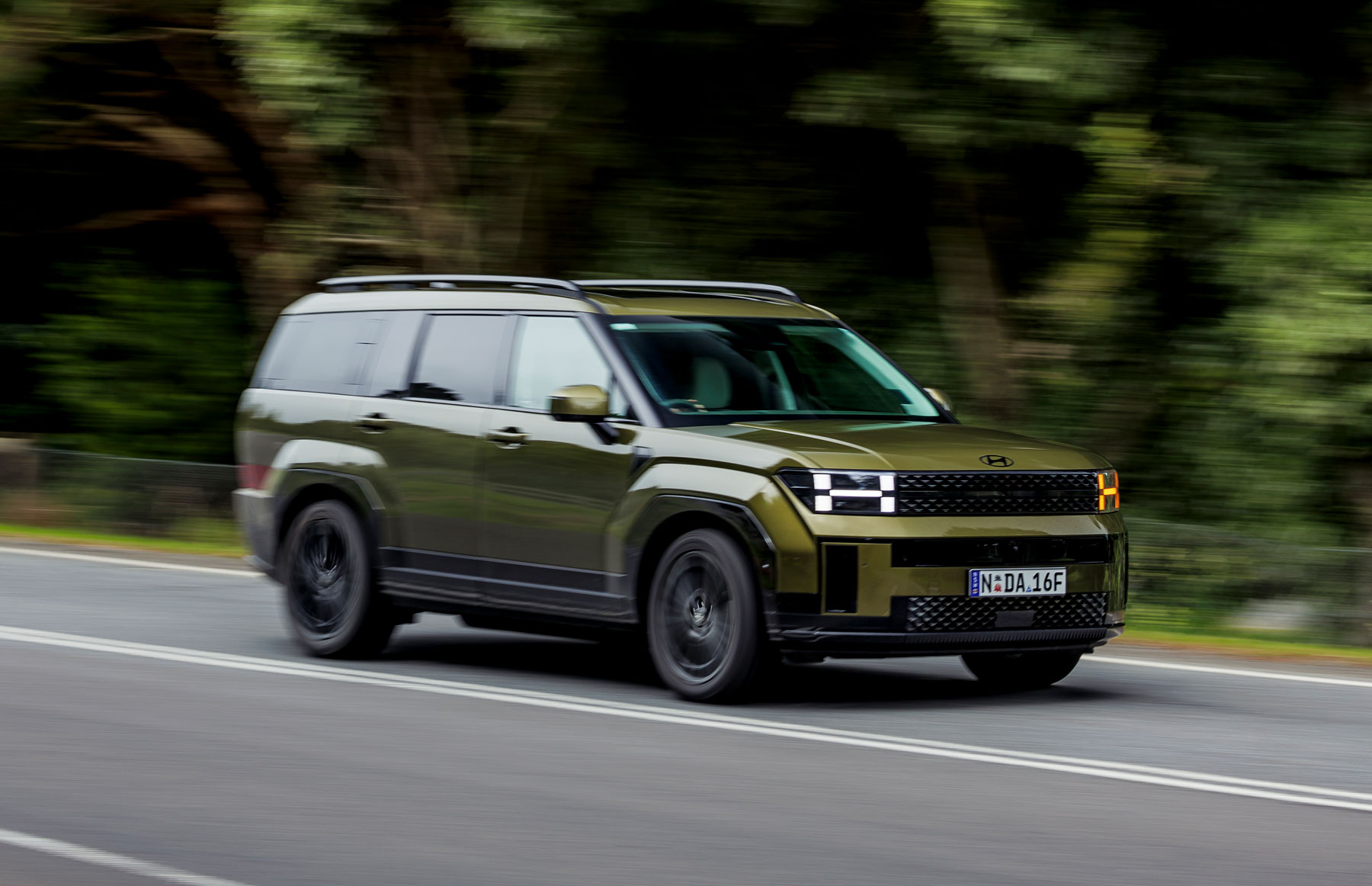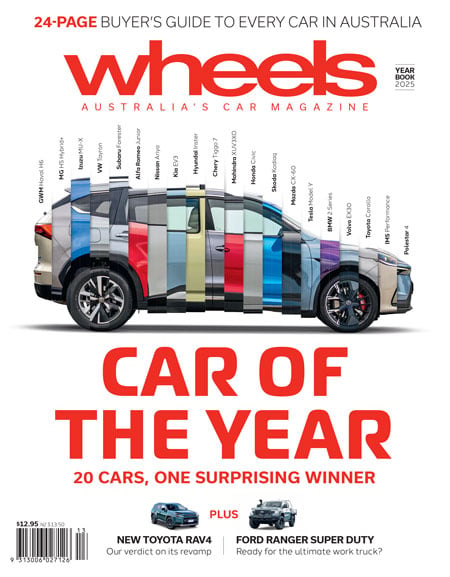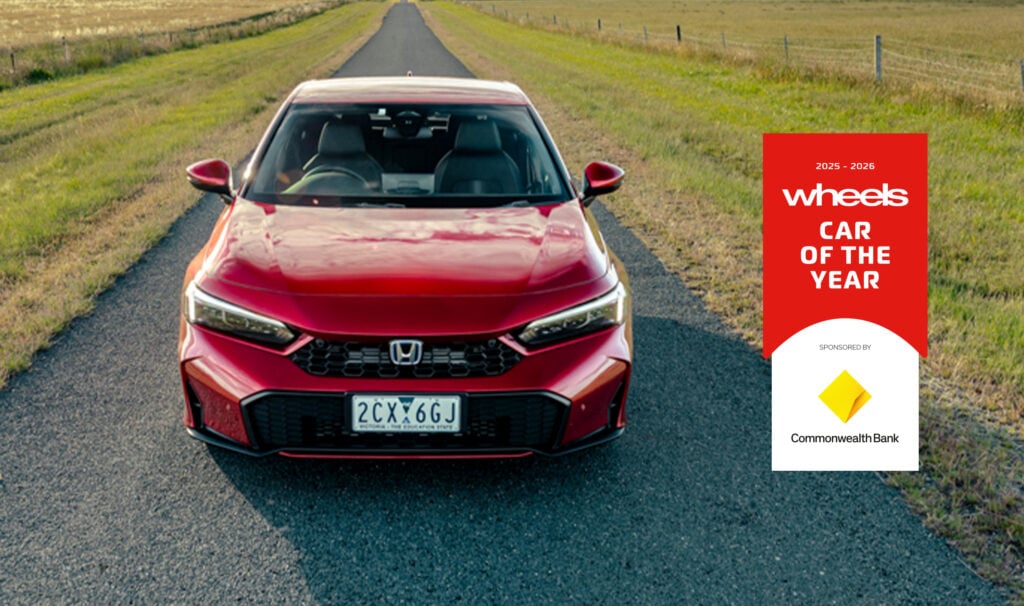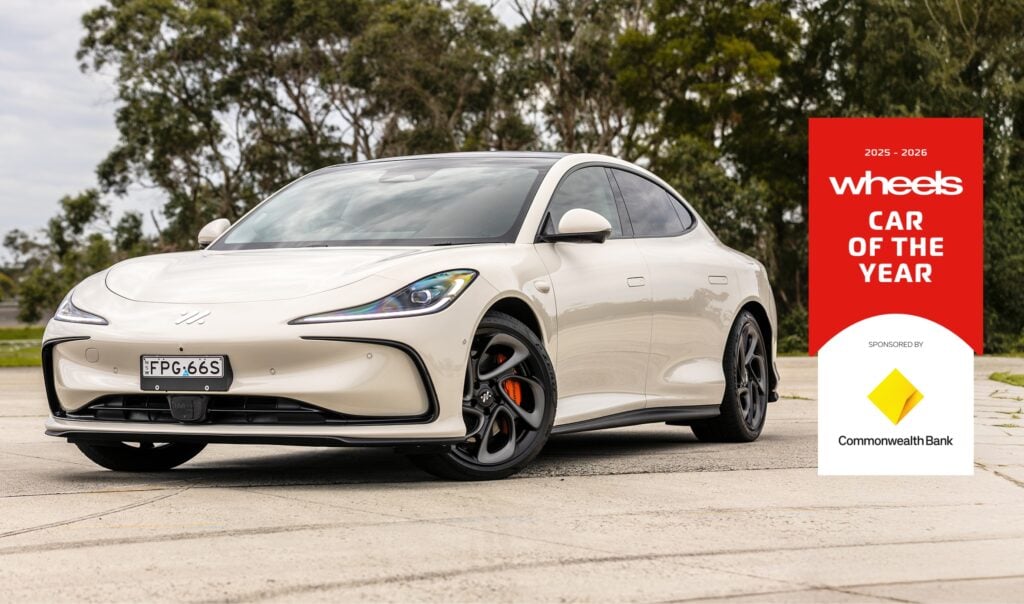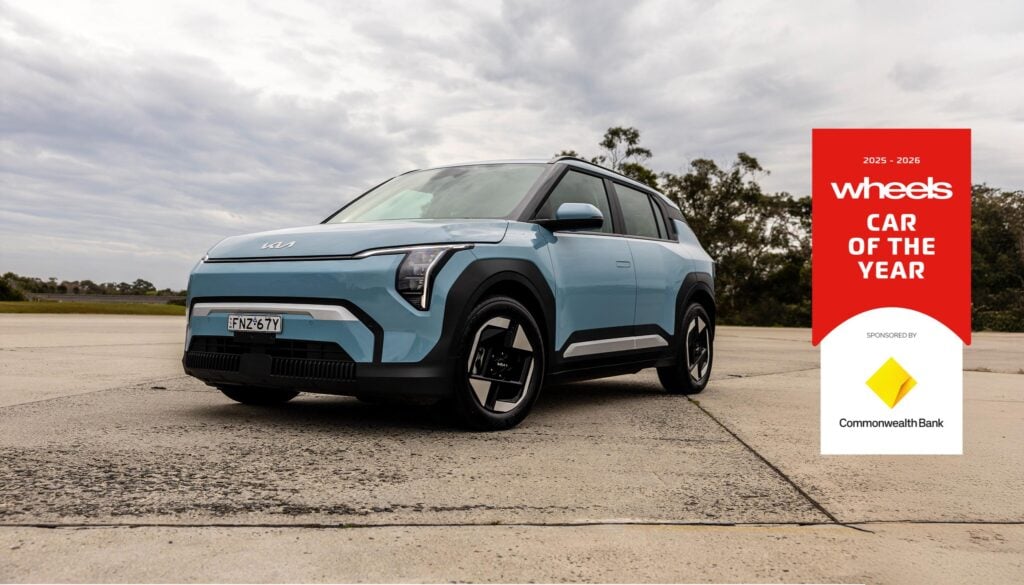Hyundai wants the Santa Fe to be noticed because the previous four generations were too often overlooked by car shoppers.
The new Santa Fe hit Australian showrooms mid-year priced $10,000 above the outgoing model, which design changes alone can’t justify. All models are powered by a hybridised 172kW/367Nm 1.6-litre turbocharged petrol engine driving either the front wheels or all four. Hyundai will add a non-hybrid 206kW 2.5-litre turbo in due course, replacing the previous generation’s 3.5-litre V6. But diesel is no longer part of the Santa Fe range.
For now, the four-cylinder hybrid is where it’s at, and despite being the smallest Santa Fe engine ever, it delivers. Even though the Santa Fe Calligraphy we tested weighs in at 2105kg, the hybrid engine and six-speed automatic transmission do a more than adequate job of meeting daily driving demands.
There is a touch of throttle lag below 2500rpm, which can make the car feel a little lethargic, most obvious in Eco mode which is prioritising fuel economy. Move out of Eco to Normal mode and the engine responds better and is also more willing to smoothly drop gears to give the driver what they want. That said, the engine can become coarse when put under pressure.
The hybrid powertrain’s energy recuperation system is commendably invisible. There’s no jerkiness transitioning from regenerative braking to recuperation. It’s also clearly doing its primary job, because we recorded 6.6L/100km on our very hilly 50km open-road loop, just one litre higher than its official claim.
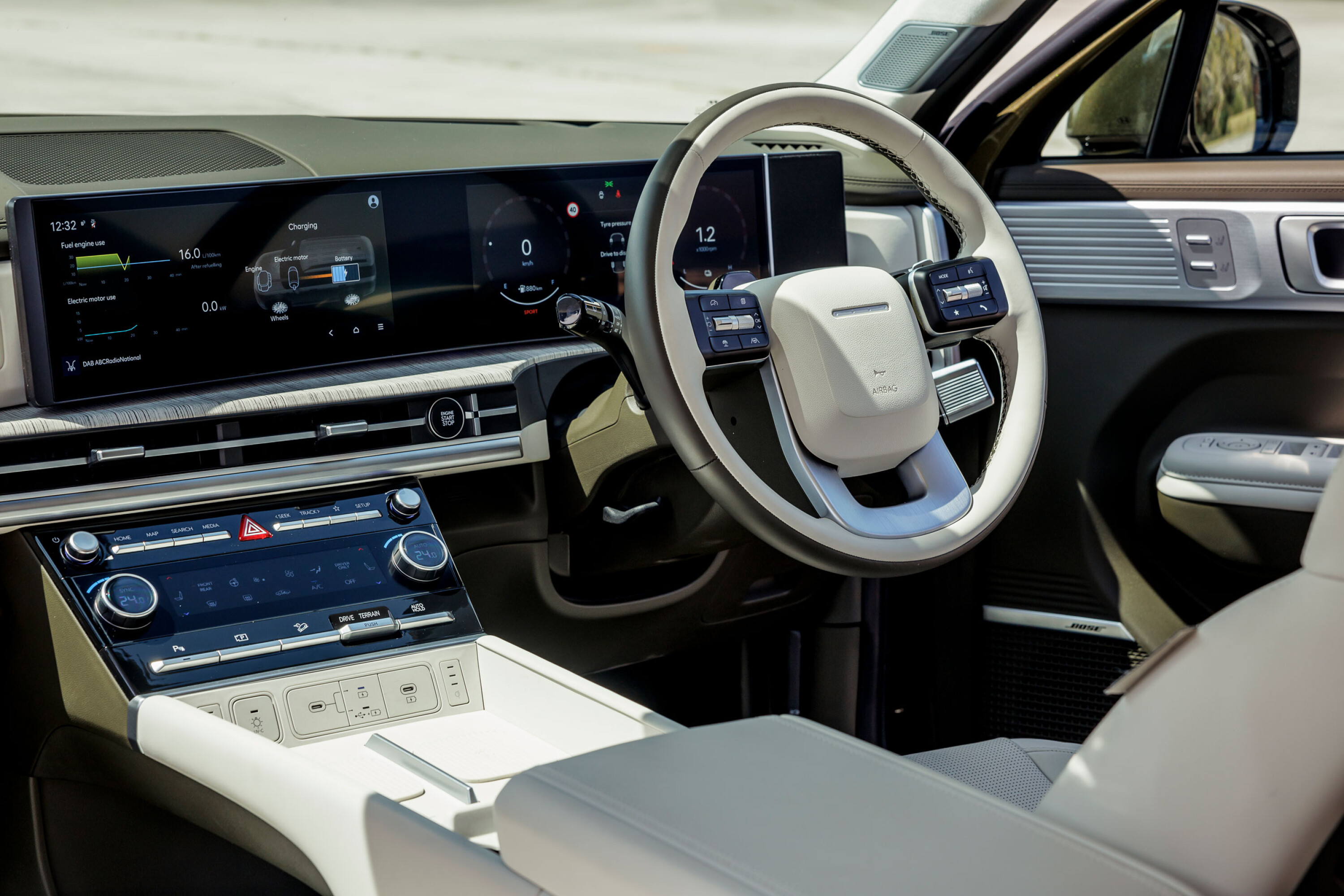
When it comes to ride quality, the Santa Fe is less impressive, but that’s more a reflection of its highly polished rivals than any real-world deficiency. The Santa Fe is another Hyundai whose suspension has not specifically been tuned for Australian conditions, the factory relying instead on historical data. This results in a vehicle that’s busier than its rivals, and also noisier on its Kumho Ecsta tyres.
The ride isn’t overly terse or overactive, just without the suppleness to match the Kluger or indeed its Kia Sorento stablemate. The tyres and suspension tune do make up for it dynamically; this may be a family truckster, but it also has the poise and the grip to make winding roads more enjoyable.
While some may debate the importance of chassis dynamics for a family SUV, Wheels sees merit in driving competence and confidence. We’d much rather a dynamically proficient family vehicle than the alternative. But still, the wider target market will be more focused on the Santa Fe’s space and practicality than any dynamic overtones.
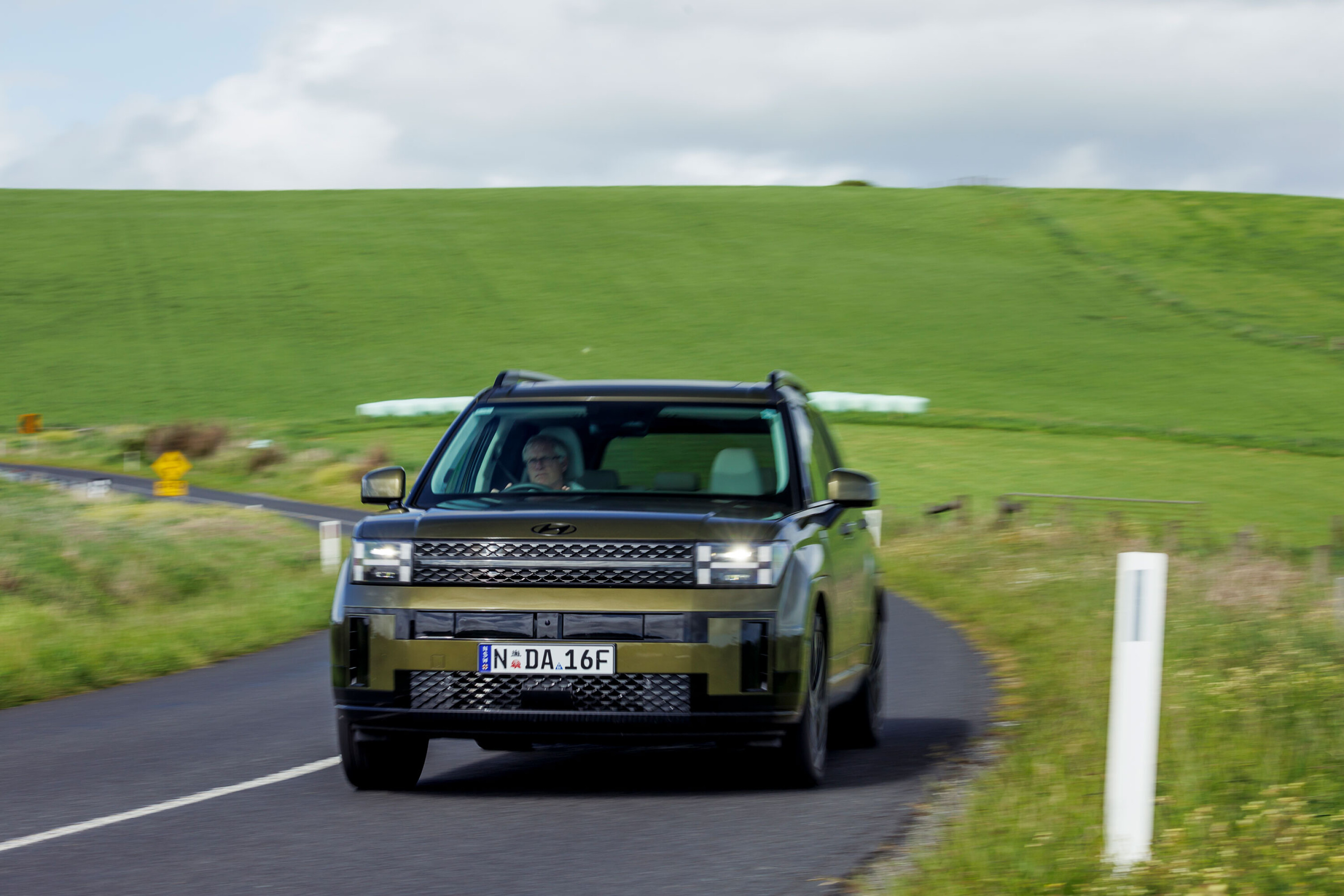
The new body is bigger: 45mm longer, 10mm taller, and riding on a 50mm-longer wheelbase, which liberates more legroom and cargo space inside. The boxy body also has some thoughtful touches, like the hidden handhold on the C-pillar which makes accessing rooftop loads easier, and also for clambering into the third row. The biggest dimensional change, however, has to be the boot opening which is 145mm wider, giving loads more load width. The boot floor’s loading height is lower, too.
The boot is a whopper in two-row mode (628 litres), but buyers will need to tick a few rooftop luggage options if they’re planning roadtrips with all three rows occupied because luggage space is almost non-existent in this configuration. Still, that’s the same for any SUV in this class, and Hyundai’s extensive – and affordable – options list again highlights the company’s family focus during development.
The range incorporates three model grades – Santa Fe, Elite and Calligraphy – and all come with three rows of seating in a 2+3+2 configuration. There’s a second Calligraphy model that replaces the bench middle row with two individual seats – handy for separating offspring that like to niggle and tease, and for walk-thru access to the third row.
We chose to test the top-spec Calligraphy because it’s expected to outsell both the base model and the Elite combined. It puts everything on the table for buyers, but does cost $75,000 plus on-roads.
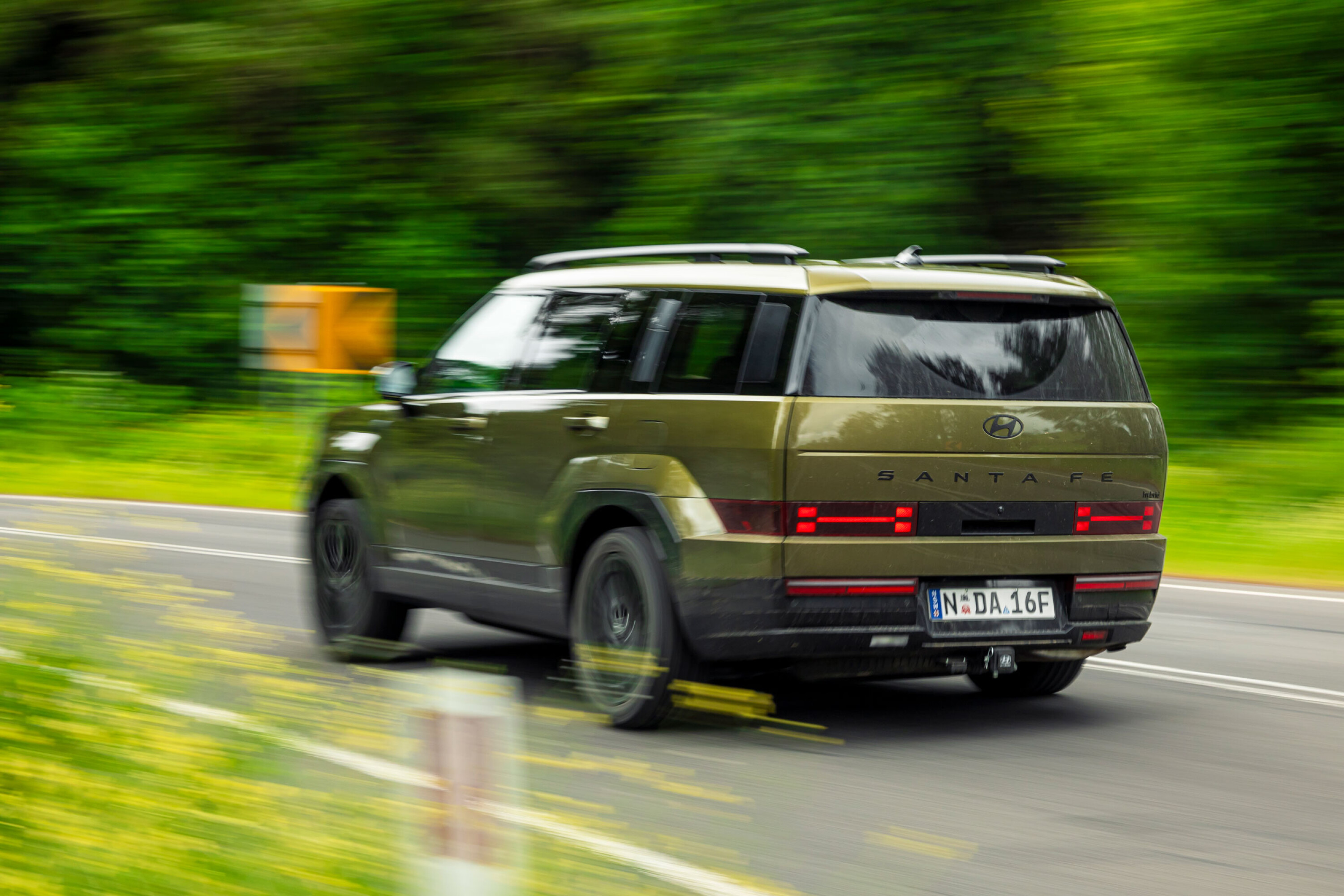
The cabin continues the boxy theme with amusing attention to detail, and also makes use of modern materials to convey quality and class. Again, Hyundai’s thoughtfulness and innovation shine through. For starters, dual wireless phone chargers speak to its family friendliness, as do the many useful storage spaces – including the centre console’s double-hinged lid that opens for rear occupants as well.
Kudos to Hyundai for also resisting the temptation to go all-in with touchscreen controls and retain actual buttons for the dual-zone climate control and other oft-used systems as well. And for adopting the one-touch speed warning override as debuted on Genesis models earlier this year, doing much to fix one of the Santa Fe’s most tedious features.
The second row has plenty of legroom and headroom, even with the Calligraphy’s huge sunroof, and the third row can accommodate adults at a push (if the second row compromises its legroom), but is more suited to children.
The more we delved into the Santa Fe, the more we understood the lengths Hyundai has gone to address buyer needs and concerns. This new Santa Fe is a thoughtfully designed and brilliantly executed family SUV that improves on the previous generation in all the right areas.
Hyundai Santa Fe Calligraphy Specifications
| Price/as tested | $75,000/$75,990 |
|---|---|
| Drive | 1598cc 4cyl, dohc, 16v, turbo, hybrid |
| Power | 172kW @ 5500rpm |
| Torque | 367Nm @ 1500-4500rpm |
| Transmission | 6-speed automatic |
| Weight | 2105kg |
| L/W/H/WB | 4830/1900/1770/2815mm |
| Tyre | Kumho Ecsta PS71 255/45R20 (f/r) |
| Safety | Untested |

